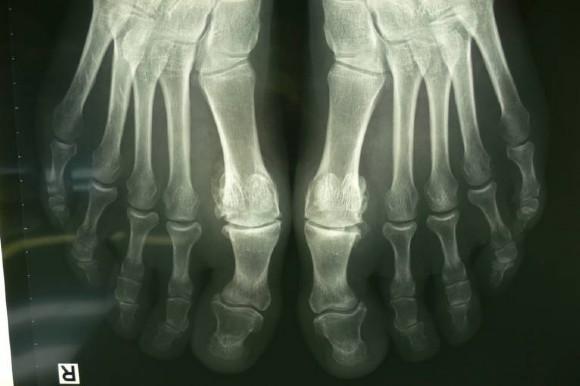6 Signs And Symptoms Of Hallux LimitusMar 29, 2018

Hallux limitus literally means stiff big toe joint. It is a condition that is characterized by decreased range of motion and pain at the big toe joint (first metatarsophalangeal joint). Over time, the limited range of motion can result in arthritis of the big toe joint.
The decreased range of motion that causes hallux limitus is a common occurrence – but it is not often recognized until the big toe becomes painful.
Signs and Symptoms of Hallux Limitus
Pain at the big toe joint, made worse by athletic activity or walking
A bony enlargement or bump at the top of the big toe (metatarsophalangeal) joint
Decreased range of motion of the big toe joint – seen as an inability to flex the big toe about 65 degrees upward while standing (see links to photos below)
Bone spurs and joint space narrowing at the big toe joint, seen on X-ray
A callus on the side of the big toe
Out-toeing (walking like a duck)
Photo showing normal big toe range of motion while standing
Photo showing decreased range of motion as seen with hallux limitus
Causes of Hallux Limitus
Hallux limitus is most often caused by abnormal foot anatomy. An elevated first metatarsal bone, such as is seen in flat feet, will hinder proper range of motion of the great toe. An abnormal length of either the second metatarsal bone or first metatarsal bone can also cause hallux limitus.
The classic example of an abnormal metatarsal length is the Morton’s toe. A Morton’s toe is another name for a second toe that is longer than the big toe. This type of foot is more prone to the discomfort of hallux limitus.
Other Causes of Hallux Limitus
Acute trauma to the big toe joint, such as a fracture
Repetitive trauma to the big toe joint – such as turf toe, which is a common overuse injury in sports
Inflammatory conditions, such as rheumatoid arthritis, psoriatic arthritis, or gout
The reduced range of motion associated with hallux limitus can progress to a complete loss of range of motion, known as hallux rigidus. Hallux rigidus is the result of either chronic or acute joint damage that leads to the two bones of the metatarsophalangeal joint fusing together.
Treatment of Hallux Limitus
Once a diagnosis of Hallux Limitus or Hallux Rigidus has been made possible treatment options include:
Rest, Ice, Compression, and Elevation (RICE) of affected limb
Stretching of the big toe
Orthotics or arch supports with special modifications to take stress off the big toe. These can be prescribed by a podiatrist.
Special shoe styles – such as stiff-soled shoes or styles with rocker soles which are seen with certain toning shoes. These styles help to decrease motion at the big toe joint.
Over-the-counter pads, such as the Cluffy Wedge®, which are added to the inside of the shoe
Surgery, if conservative measures fail to improve symptoms. Surgery involves procedures to either restore range of motion to some degree or fuse the joint completely to prevent any motion.
With each step we take, a certain amount of flexibility of the big toe joint is required. This allows the foot to properly absorb and transfer our body weight as our feet hit the ground. When foot flexibility is compromised, other joints of the body can feel the effects. One study linked hallux limitus to back pain and showed that successful treatment of it reduced back pain symptoms in a majority of study participants.
by Catherine Moyer For Very Well
Be the first to post a message!